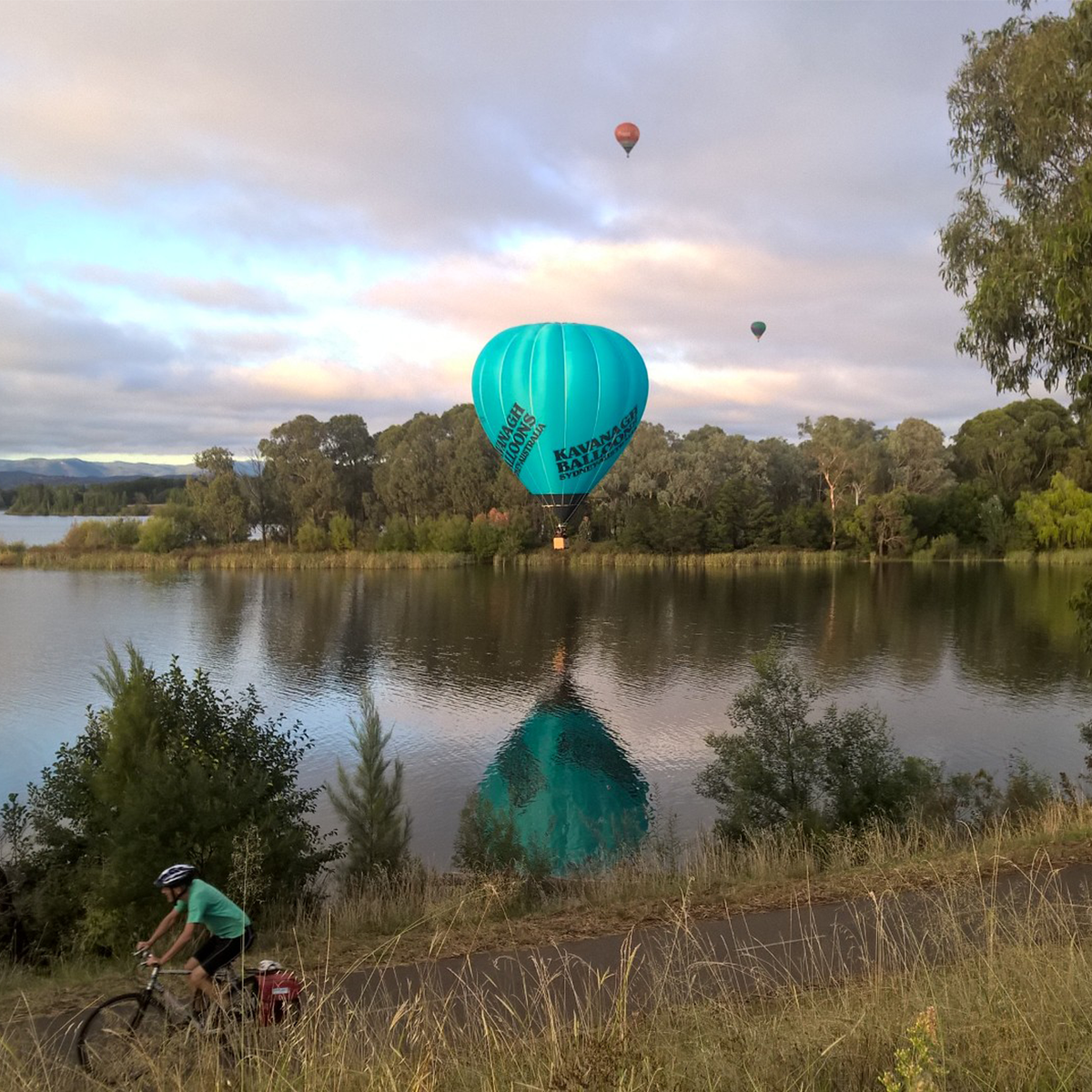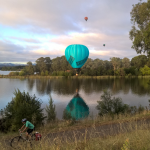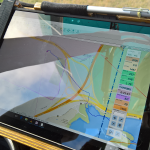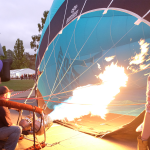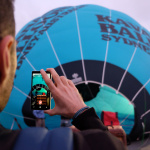With any sport at the elite level, it comes down to percentages. An extra one or two per cent could be the difference between an average performance and one which puts you ahead of the field.
When piloting a balloon hundreds of metres above the ground, those percentages matter as everything is done in real-time.
Sean Kavanagh, Australia’s representative at six World Ballooning Championships, set himself a challenge to optimise performance, and he found the answer in technology.
No longer is it a matter of firing the propellant to fill the balloon, and launching into the air to float with the breeze across the landscape.
Technology has provided its own propellant to the world of ballooning – from competition to leisure flights and tourism – and Sean is leading the way.
Sean has developed OziTarget – an App which is unique because of the range of information it can deliver to pilots in flight. The level of insight Sean obtains can only be achieved through Surface, given the device’s power and capabilities.
“This is technology tailor-made for balloon flight,” says Sean. “It’s all about combining your briefing notes before the flight, the pre-flight preparation, navigation of the course and mapping directions, and the post-flight work. Once you’re in the air, it makes flying even more enjoyable as you have a clear gauge on how you’re tracking when in the air.”
OziTarget allows balloon pilots to identify a position on a map and pin-point their position “to the nearest metre or two”. Sean says it’s analogous to using an old street directory, but technology has changed the game.
Sean uses Microsoft Surface on board in the balloon basket, and his OziTarget application attaches to a basic mapping software called OziExplorer.
“OziExplorer was originally written for four-wheel drive enthusiasts,” says Sean. “It was one of the earlier GPS mapping programs that hadn’t come out of a software house.”
Sean says he started “playing with digital mapping” about 1997, when he was doing a ballooning tour around Australia for Encyclopedia Britannica.
“The great thing about OziExplorer was that you could scan a map, calibrate it, and get your position on the GPS,” he says. “I had the biggest brick of a laptop, pre 2000, and was plotting big red dots over a white screen.”
Then came the lightbulb moment: “I realised GPS was just the beginning and joining those red dots on a white screen? That was the future!”
He emailed the developer of the software and asked if he could write a program for balloonists but he wasn’t interested. So, Sean realised he would have to learn how to program, which he did, then he taught himself to write the software he needed and that led to developing OziTarget.
“My whole mission was to minimise the time spent working with navigation systems while flying and this software is written with a view to doing things more efficiently,” he explains. “Running software on the Surface device is much easier than reading a paper map!”
He says in the old days of ballooning competition pilots would “sniff the wind” and keep looking outside the basket to find their position. They still “sniff the wind”, says Sean, but technology now gives them more time to do so.
It was a sport that was aging and, even until about two years ago, he says many pilots were still reading paper maps and perhaps using hand-held GPS devices while navigating a course on their flights.
“I realised early on that I was more tech savvy and could use it to my advantage. What I figured out was that technology would give me the edge over my competition – whether it be in ballooning or in business.”
These days, however, “there is a scary amount of technology being thrown at a bag of hot air flying around!”
Sean’s OziTarget is helping Australian balloonists stay among the top ballooning nations of the world, the USA, Germany, UK, Japan and France.
The tipping point, says Sean, has only been in the past couple of years because of the advances in technology delivered by the Surface – importantly, its battery life, screen brightness and pen input. Prior to that, keeping laptops charged was the biggest challenge facing balloon pilots. They had the technology on board, but not the power.
“We constantly had to charge devices when on the ground and, in competition, time is of the essence,” he says. “You’d have to find somewhere to charge the device and, at the same time, do briefings, plan flights, sort your maps, and the last thing a pilot needs is ‘range anxiety with a navigation tool’ (a fear of runnin gout of battery)!”
All of that has changed with the Surface technology, says Sean. He can do the morning briefing and planning, do the flight which could take up to three hours, do his post-flight review, post his photos on Facebook and other social media and even go to the afternoon briefing “without having to charge the computer”.
https://youtu.be/PPCryyjOvDU
Even better, Sean says his application has given Australian balloonists “a competitive advantage” against the best in the world. The tyranny of distance faced by all Australia’s international athletes – let alone the rest of the population – can be a disadvantage when it comes to regular competition. As Sean explains, Americans and Europeans might be in ballooning competitions every other weekend.
However, his OziTarget, is being sought and bought by balloonists from around the world.
Sean says most of the top Americans were flying with iPads but many have replaced them with Surfaces or laptops in order to use his software: “You know you’re onto something good when people are buying brand new devices just to use my App!”
Sean Kavanagh was born into ballooning. He took over the family business, which manufactures and sells balloons across Australia and internationally. He might sell between 25 and 30 balloons a year, ranging from small sport balloons for one to three people (about $50K to $60K), through to big passenger balloons for about 24 people ($150k to $200K).
Ballooning has always been a source of wonder and romance for people the world over.
“The public perception of balloons is that they are big wallowing things that you don’t have much control over,” he says. “In fact, you have a great deal of control these days, and technology makes it that much simpler.”
He likens the technology to that used in Formula One racing cars, or even in A380 or similar aircraft.
But there is a caveat: “If the guy sitting in the seat can’t drive the car, it’s not worth the money”
Maximising your competition result by making as few mistakes as possible over 10 to 12 flights is the key, according to Sean.
As for recreational ballooning, OziTarget and the Surface tablet allow pilots and their passengers to take their snapshots and post them to social media, making everyone on the ground jealous about the “better life we’re having up in the air”!
We’ve come a very long way since the first piloted balloon flight was launched by the Montgolfier brothers above Paris in 1783.
The Montgolfiers made their early balloons from wallpaper, because the material combined strength with being lightweight. Today’s balloonists find their wallpaper on their Surface…
For the modern-day Montgolfier, it gives a whole new meaning to the term “surface to air”.


